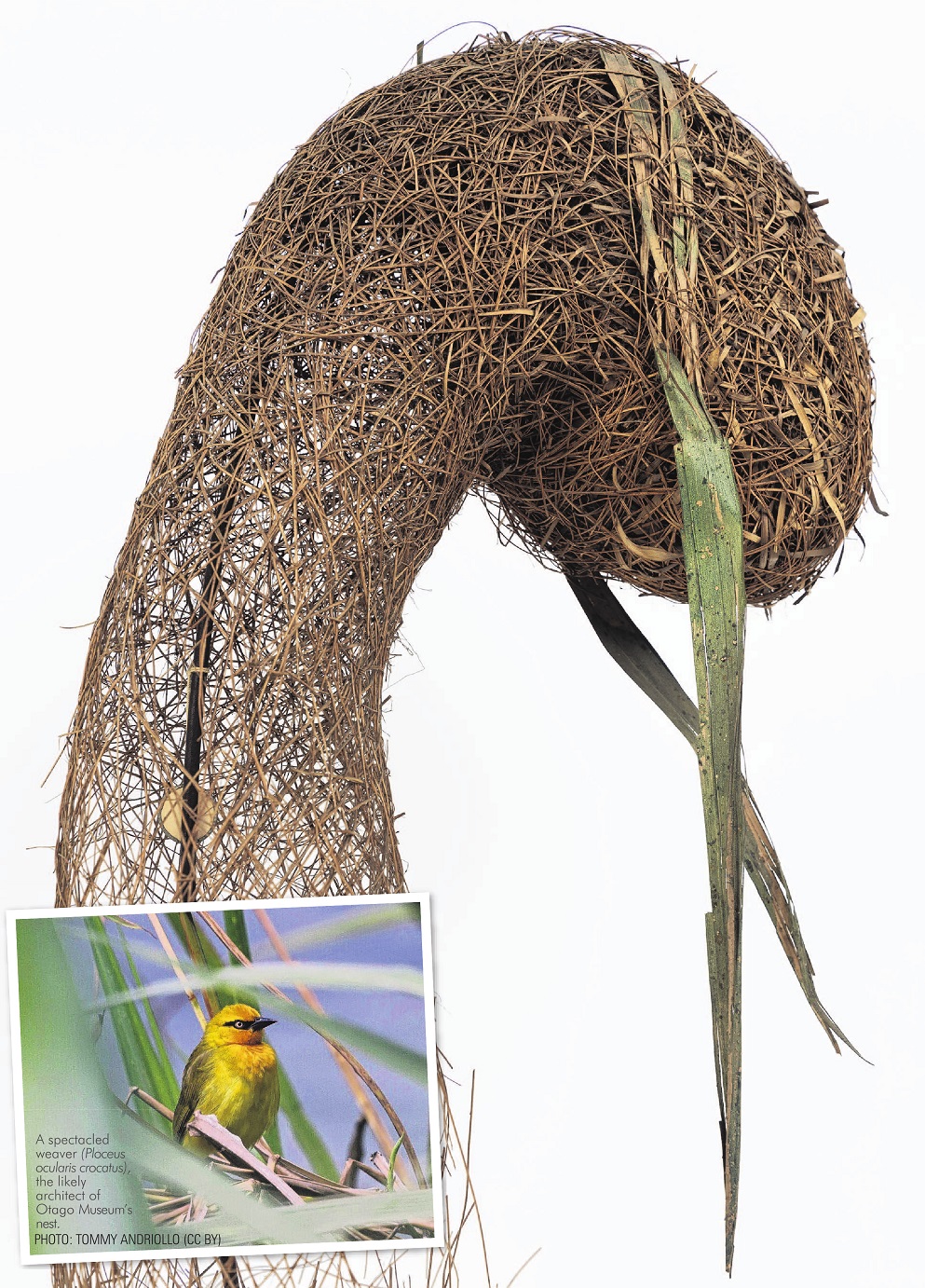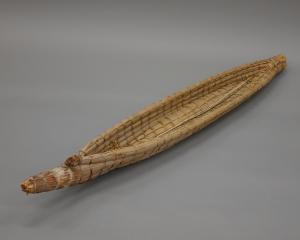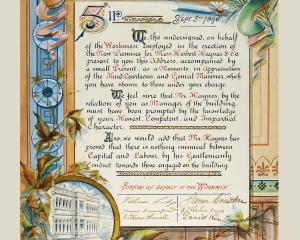

Many birds, especially tree-dwelling birds, weave fibres, leaves, grasses and other materials into a shape that they instinctively make. These shapes are so tied to the builder that many nests are identifiable to the species of bird that built them. Some are straightforward: we’ve probably all seen the bowl-like woven nest of a sparrow or dunnock. But all are delicate and seem like they’d hardly hold the chick, let alone the parent. And every now and then, a nest comes along that is so intricate, so beautiful, that it inspires awe. One such nest belongs to the weaver bird and, being a bird-nest fan, I was lucky enough to happen upon a large example in the Tūhura Otago Museum collection.
Standing at 60cm tall and taking up an entire shelf, it was difficult to overlook. The nest’s grass-like stalks are delicately woven into a koru design, with a couple of long leaves attached at the closed end. Although it is obviously fragile, it holds its shape without help.
There are 122 species of weaver bird in the world, ranging across Asia and Africa. Weaver birds are often sexually dimorphic with brightly coloured males and more muted females, and it is typically the male who builds the nest to attract a female. Interestingly, this is the only bird that is known to be able to tie a knot, which must come in handy for building fabulous homes.
Helpfully, "my" nest has a label stating its collection place as "Ashantee, West Africa", which helps with the identification process. It is also a stunning specimen in a distinctive shape, so it seemed like an easy task to assign a species name. It turns out, though, that even gorgeous, tall, intricately designed delights such as this nest can be difficult to identify. This one appeared at first glance to be most like the nest of the baya weaver, Ploceus philippinus. Unfortunately, according to eBird, that species is found in Southeast Asia and not in Africa. With a label stating "West Africa", it was clear that either the label-writer was incorrect (possible) or that I needed to delve further into this identification (also possible, and much more likely).
So, after much internal debate and perusal of books and other sources, I have concluded that the nest was most likely built by a kind of spectacled weaver, Ploceus ocularis. This species has several subspecies, none of which seem to have a range as far west as Ghana (the modern name for the area in West Africa once recorded by travellers as Ashantee). One particular subspecies stands out: Ploceus ocularis crocatus. Its nest is spherical with an approximately 8cm-wide tube of varying length, and has been described as being woven in fine grasses, and typically attached to a drooping branch or palm frond. The bird isn’t typically found as far west as Ghana, but given how closely it matches, down to the palm leaves attached to the main chamber, I hold out hope that this identification will give a future researcher a useful starting point for improving (or potentially confirming) my identification.
Cody Phillips is Tūhura Otago Museum collection manager, natural science.












